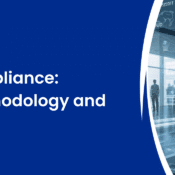Security Compliance Frameworks: A Beginner’s Guide
Security Compliance Frameworks: A Beginner’s Guide
Security Compliance Frameworks: A Beginner’s Guide
In today’s digital world, protecting sensitive data is more important than ever. Organizations face constant cybersecurity threats while also needing to comply with a variety of regulations. This is where security compliance frameworks and standards come into play. Following these guidelines not only helps businesses secure their systems but also ensures adherence to laws, builds customer trust, and minimizes risk.
Why Security Compliance Matters
Implementing compliance standards is not just about avoiding fines or legal penalties. It provides a structured approach to secure information systems. Key benefits include:
- Protecting sensitive data from cyber threats.
- Ensuring compliance with national and international cybersecurity laws.
- Reducing financial, legal, and reputational risks.
- Increasing operational efficiency through standardized procedures.
Businesses that ignore compliance risk data breaches, legal consequences, and loss of customer confidence.
Popular Security Compliance Frameworks & Standards
1. NIST Cybersecurity Framework
The NIST cybersecurity framework is a globally recognized guide that helps organizations identify, protect, detect, respond to, and recover from cyber threats. Its five core functions are:
- Identify – Understanding the organization’s assets, risks, and resources.
- Protect – Implementing safeguards to secure assets.
- Detect – Identifying cybersecurity events in real time.
- Respond – Taking action against detected threats.
- Recover – Restoring operations after a cybersecurity incident.
Many organizations, from government agencies to private enterprises, rely on NIST for a structured and effective security approach.
2. ISO 27001
ISO 27001 is an international standard for information security management systems (ISMS). It provides a systematic approach to managing sensitive company information, ensuring confidentiality, integrity, and availability. Key benefits include:
- Streamlined risk assessment and management.
- Enhanced compliance with global regulations.
- Building trust with clients and partners.
ISO 27001 is especially useful for companies dealing with critical data, such as finance, healthcare, and IT sectors.
3. Other Key Compliance Standards
Besides NIST and ISO 27001, organizations may follow frameworks like:
- GDPR – Focuses on data privacy for EU citizens.
- HIPAA – Health sector compliance in the US.
- SOC 2 – Security, availability, and confidentiality standards for service providers.
- PCI DSS – Payment card industry data security standards.
Choosing the right framework depends on your industry, business size, and the types of data you handle.
Implementing Security Compliance Frameworks
Successfully adopting compliance standards involves several steps:
- Risk Assessment & Gap Analysis – Identify vulnerabilities and areas where your current practices fall short.
- Policy and Procedure Development – Document clear guidelines for data security and incident handling.
- Employee Training – Educate staff about best practices, policies, and threat awareness.
- Monitoring & Auditing – Continuously track compliance, review processes, and make improvements.
A proactive approach ensures long-term security and reduces the likelihood of breaches.
Benefits of Following Compliance Standards
- Reduced vulnerabilities: Systematic security reduces risks.
- Customer trust: Compliance demonstrates responsibility and professionalism.
- Legal protection: Helps avoid penalties and lawsuits.
- Operational efficiency: Standardized processes reduce errors and downtime.
Following frameworks like NIST and ISO 27001 turns compliance into a competitive advantage.
Challenges in Compliance Implementation
Organizations may face hurdles like:
- Limited resources for small businesses.
- Keeping up with evolving cybersecurity laws.
- Integrating compliance measures with existing IT systems.
Despite these challenges, the benefits of a structured security approach far outweigh the difficulties.
Conclusion
Security compliance is no longer optional. Adopting frameworks such as the NIST cybersecurity framework and ISO 27001 ensures that organizations protect sensitive data, comply with laws, and build customer trust. By implementing clear policies, continuous monitoring, and employee training, businesses can stay secure, competitive, and resilient.
Start your compliance journey today to safeguard your organization and demonstrate accountability in an increasingly digital world click here to begin.
FAQs
What is a security compliance framework, and why should I implement it?
A security compliance framework is a set of guidelines that helps organizations protect sensitive data, follow cybersecurity laws, and reduce risks. Implementing frameworks like NIST or ISO 27001 ensures your business stays secure, avoids penalties, and builds customer trust.
Which industries benefit from NIST and ISO 27001?
Industries handling sensitive data, such as finance, healthcare, IT, and government, benefit most. Small businesses can also use these frameworks to improve security, comply with regulations, and strengthen customer confidence.
How often should compliance audits be done?
Compliance audits should be performed at least annually or after major system changes. Audits identify vulnerabilities, measure adherence to standards, and help maintain compliance with cybersecurity laws.
Can small and medium businesses implement these frameworks?
Yes. SMEs can adopt frameworks by focusing on critical systems, training employees, and using simplified risk assessment processes. Consulting services can further streamline implementation.
What happens if a company does not follow security compliance standards?
Non-compliance can lead to data breaches, legal penalties, financial losses, and reputational damage. Following standards like NIST and ISO 27001 protects your organization and demonstrates accountability.
How can technology help with compliance implementation?
Tools like security management software, automated monitoring, and reporting platforms simplify framework adoption. They reduce errors, track compliance in real time, and make audits easier to manage.


